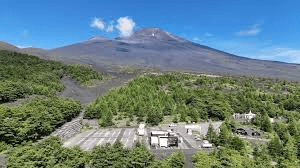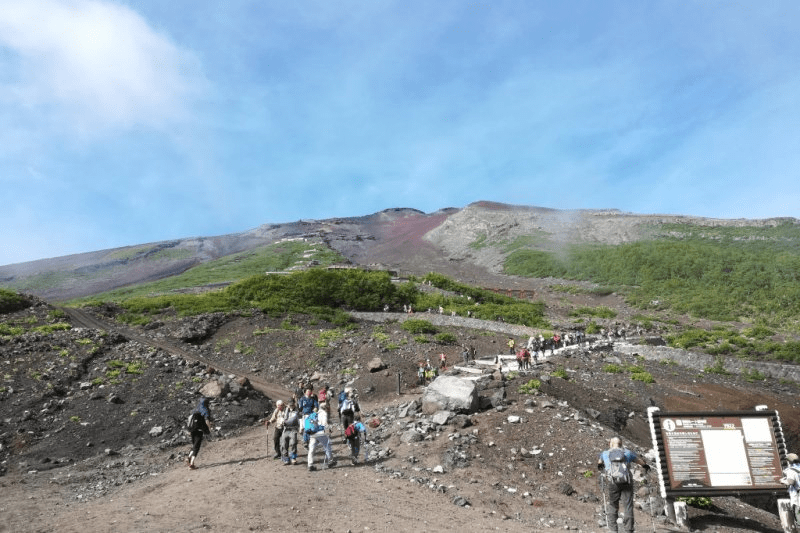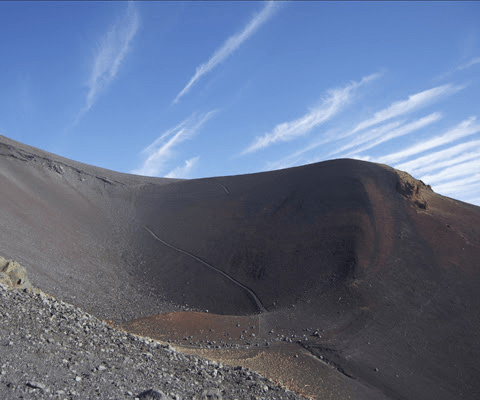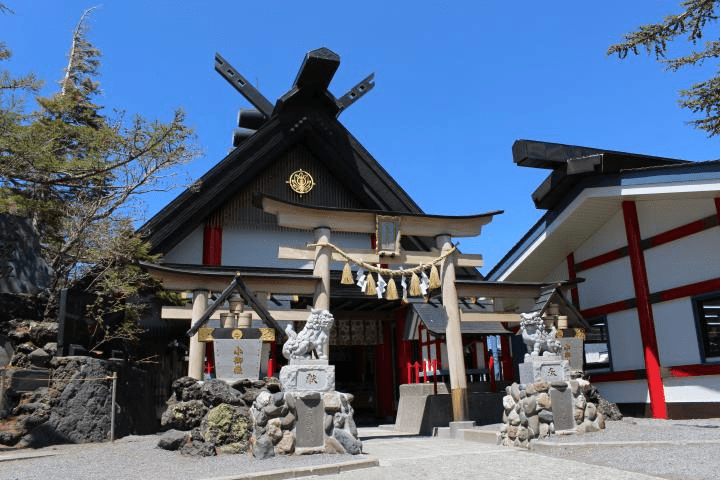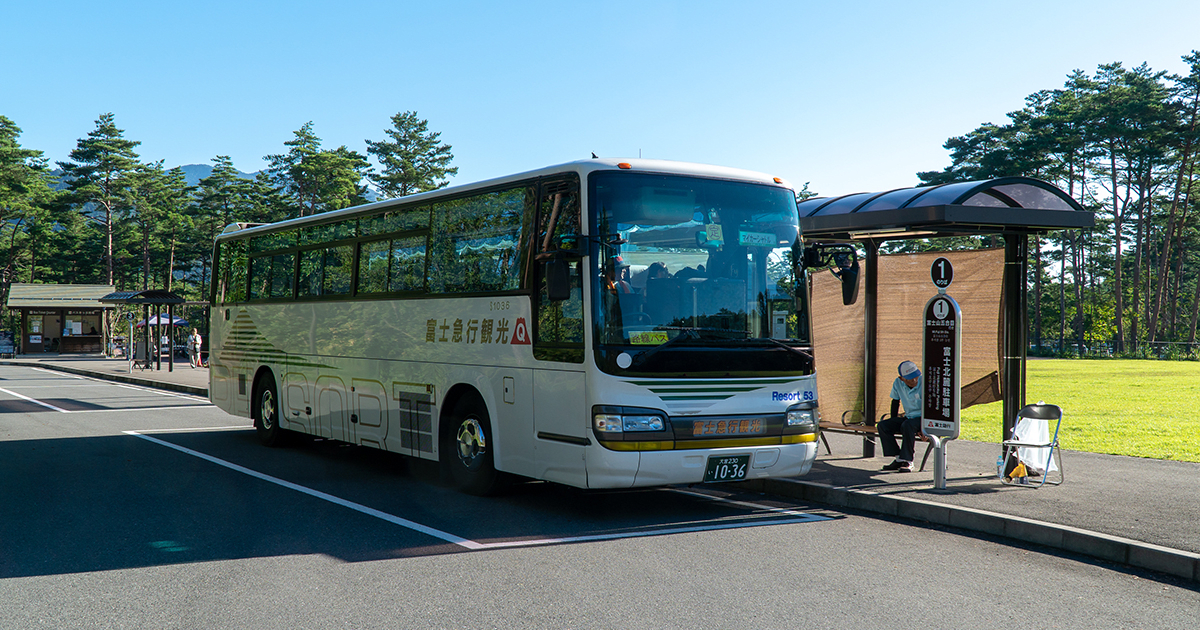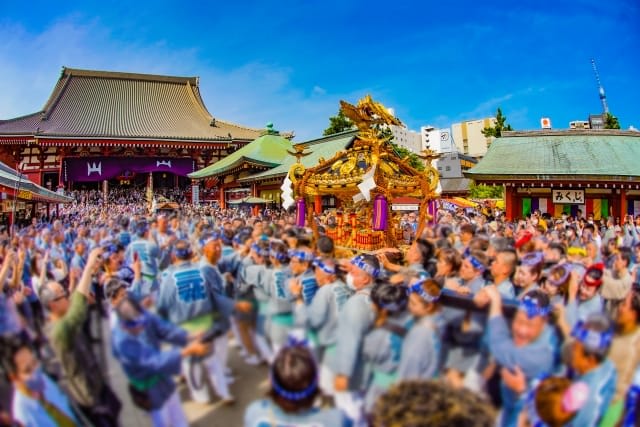Mt. Fuji 5th Station: Complete Access Guide to Subaru Line, Fujinomiya, Gotemba & Must-see Spots on Mount Fuji
Mount Fuji, a symbol of Japan, attracts countless tourists who visit Japan specifically to witness its majestic presence. However, given Mount Fuji's massive size and the numerous tourist attractions scattered around its vicinity, we've created this guide to help you explore the Mount Fuji area efficiently.
Additionally, Magical Trip, which won the #1 spot for all tours on Tripadvisor in 2024, has recently launched the Mount Fuji tours.

The "Mt. Fuji Full-day Nature Guided Tour with a Private Chartered Car & Guide" offers a stress-free experience exploring the Mount Fuji area, complete with private car transportation from Tokyo.
Even if you have limited time to explore the Mount Fuji region, this tour allows you to visit all the must-see spots with detailed guidance from your tour guide.
If you're interested in efficiently experiencing the essential locations while gaining deep insights from a knowledgeable local guide who knows the area inside and out, we highly recommend joining the "Mt. Fuji Full-day Nature Guided Tour with a Private Chartered Car & Guide."
We hope you'll have a wonderful time experiencing everything Mt.Fuji has to offer by joining a Magical Trip tour!
Introduction
Mt. Fuji stands as Japan's iconic symbol and ranks as the nation's No.1 mountain in both elevation and recognition. People have long been captivated by Mt. Fuji's perfectly symmetrical conical shape and unique natural landscapes, including lakes formed by lava from its volcanic eruptions.
Furthermore, Mt. Fuji, registered as a world cultural heritage site, has not only been an object of worship for Japanese people since ancient times but also attracts numerous international visitors today. Every year, many people visit this aspirational mountain to experience its natural beauty and cultural significance through climbing.
In this article, we'll introduce Mt. Fuji 5th Station, a crucial point for mountain climbing, sightseeing, and scenic views.
Access Points Near Mt. Fuji 5th Station for Mountain Climbing
While Mt. Fuji stands at 3,776 meters, most climbers typically begin their ascent from the fifth station at around 2,000 meters rather than starting from the first station at the mountain's base. Consequently, there are four different trail starting points around Mt. Fuji 5th Station area, each serving as a base for different climbing routes.
These stations aren't just departure points for climbing; they feature restaurants, souvenir shops, and shrines, making them enjoyable destinations even for non-climbing tourists. Below, we'll explore the unique characteristics and attractions of each location, so please be sure to check them out.
Climate at Mt. Fuji 5th Station and Recommended Clothing
Mt. Fuji 5th Station, situated at around 2,000 meters elevation, experiences significantly lower temperatures compared to ground level. As temperature decreases by approximately 0.6°C for every 100-meter increase in elevation, the temperature at the fifth station is roughly 12°C lower than at ground level. During the climbing season from July to September, the average temperature at Mt. Fuji 5th Station is around 15°C, compared to Tokyo's ground-level temperatures.
Even during the summer climbing season, temperatures at Mt. Fuji 5th Station are comparable to Tokyo's autumn or winter weather. Wind and rain can make it feel even colder, so bringing an extra layer to wear over short-sleeved clothing is essential.
Additionally, due to the higher elevation, you'll be closer to the sun with stronger UV radiation. It's advisable to prepare UV protection items such as sunscreen and hats for those concerned about sun exposure.
Explaining 4 Spots at Mt. Fuji 5th Station with Their Unique Features
Fuji Subaru Line 5th Station (Yoshida Route)
Source: Fujiyoshida Official
The Fuji Subaru Line 5th Station is the base point of the Yoshida route, which leads to the summit from the north side of Mt. Fuji in Yamanashi Prefecture. Located at an elevation of 2,305m, the Fuji Subaru Line 5th Station marks the start of the Yoshida route to the summit. This route is the most popular climbing path, featuring gentle slopes and numerous mountain huts, making it ideal for beginners and attracting the majority of Mt. Fuji climbers.
Beyond being just a climbing starting point, Mt. Fuji 5th Station offers unique dining experiences with restaurants serving exclusive local cuisine and well-stocked souvenir shops. The location provides breathtaking views of Mt. Fuji's majestic peak and, weather permitting, spectacular views of the sea of clouds below, creating an ethereal landscape.
Visitors can access the Fuji Subaru Line 5th Station via shuttle buses and taxis from the foot of Mt. Fuji, as well as dedicated climbing buses.
The Famous "Mt. Fuji 5th Station" Refers to the Fuji Subaru Line 5th Station
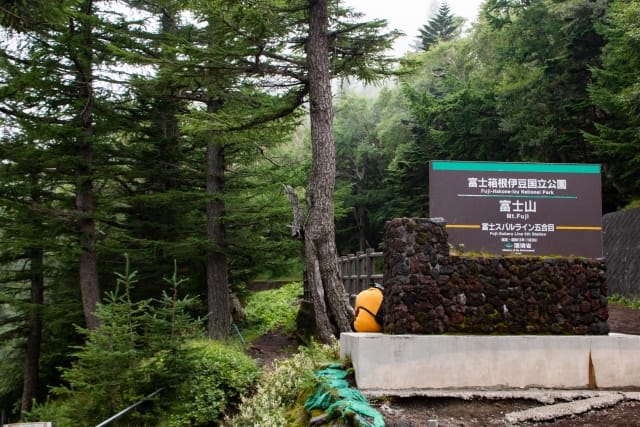
What's commonly known as "Mt. Fuji 5th Station" specifically refers to this Fuji Subaru Line 5th Station. Beyond being a starting point for summit climbs, Mt. Fuji 5th Station offers various activities including nature hiking experiences and exclusive local cuisine. With numerous attractions easily accessible to international tourists, we'll explore these in detail later.Access to the Subashiri 5th Station is available via climbing buses from JR Gotemba Station, as well as shuttle buses and taxis.
Fujinomiya 5th Station (Fujinomiya Trail)
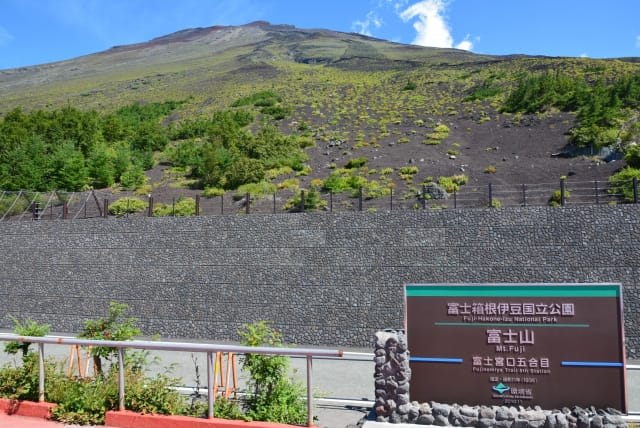
The Fujinomiya 5th Station (Mt. Fuji 5th Station) serves as the base for the Fujinomiya route, approaching from Mt. Fuji's southern side in Shizuoka Prefecture. At 2,380m, it's the highest 5th station. The Fujinomiya route is the second most popular trail after the Yoshida route due to its shorter distance to the summit. However, its steep incline and rocky terrain make it more suitable for physically fit climbers.
From this station, you can enjoy a unique perspective where the summit appears deceptively gentle, like a mild slope. The station is well-equipped with shops and restrooms, and a mountain hut serving meals can be found at the 6th station, about 25 minutes further up.
Access is available via climbing buses from bullet train stations (Mishima Station and Shin-fuji Station) and JR stations (Fuji Station and Fujinomiya Station), as well as shuttle buses and taxis.
Gotemba New 5th Station (Gotemba Trail)
Source: Official Instagram
The Gotemba New 5th Station (Mt. Fuji 5th Station) is the starting point for the Gotemba route, approaching the summit from the southeastern side of Mt. Fuji in Shizuoka Prefecture. Situated at 1,440m, this is the lowest of all 5th stations. The Gotemba route is the longest trail with limited mountain huts, making it best suited for advanced climbers.
The station features the "Mt. FUJI TRAIL STATION," an information center displaying Mt. Fuji climbing gear and providing tourist information about Gotemba City. This facility includes an observation deck with summit views and hosts various Mt. Fuji-related events, making it enjoyable for general tourists.
Access is available via climbing buses from JR Gotemba Station or taxi services.
Subashiri Trail 5th Station (Subashiri Route)
Source: Google Maps
The Subashiri Trail 5th Station, situated at an elevation of 1,970m, serves as the base for the Subashiri route ascending to the summit from Mt. Fuji's eastern side in Shizuoka Prefecture. The Subashiri route features different ascending and descending paths, including the famous "sand run" (sunabashiri) on the descent, where hikers can slide down volcanic ash slopes. While offering spectacular open views, particularly during the sand run, this route has fewer mountain huts and is better suited for more experienced climbers.
The Subashiri 5th Station offers beautiful views of both lush forests and Mt. Fuji's peak. Near the trailhead stands the historic Komitake Shrine, dedicated to the mountain deity protecting both Mt. Fuji and its climbers. The mountain huts at Subashiri 5th Station are famous for their mushroom dishes, featuring locally foraged mushrooms from Mt. Fuji's forests - a must-try specialty.
For those who want to tour around Mt. Fuji easily and stress-free, a private tour with round-trip transportation from Tokyo is recommended.
Not only will an experienced local guide carefully select and show you the must-visit spots, but they will also arrange the itinerary in advance to ensure smooth travel, eliminating the hassle of creating your own itinerary or worrying about transportation issues.
・Mt. Fuji Full-day Nature Guided Tour with a Private Chartered Car & Guide
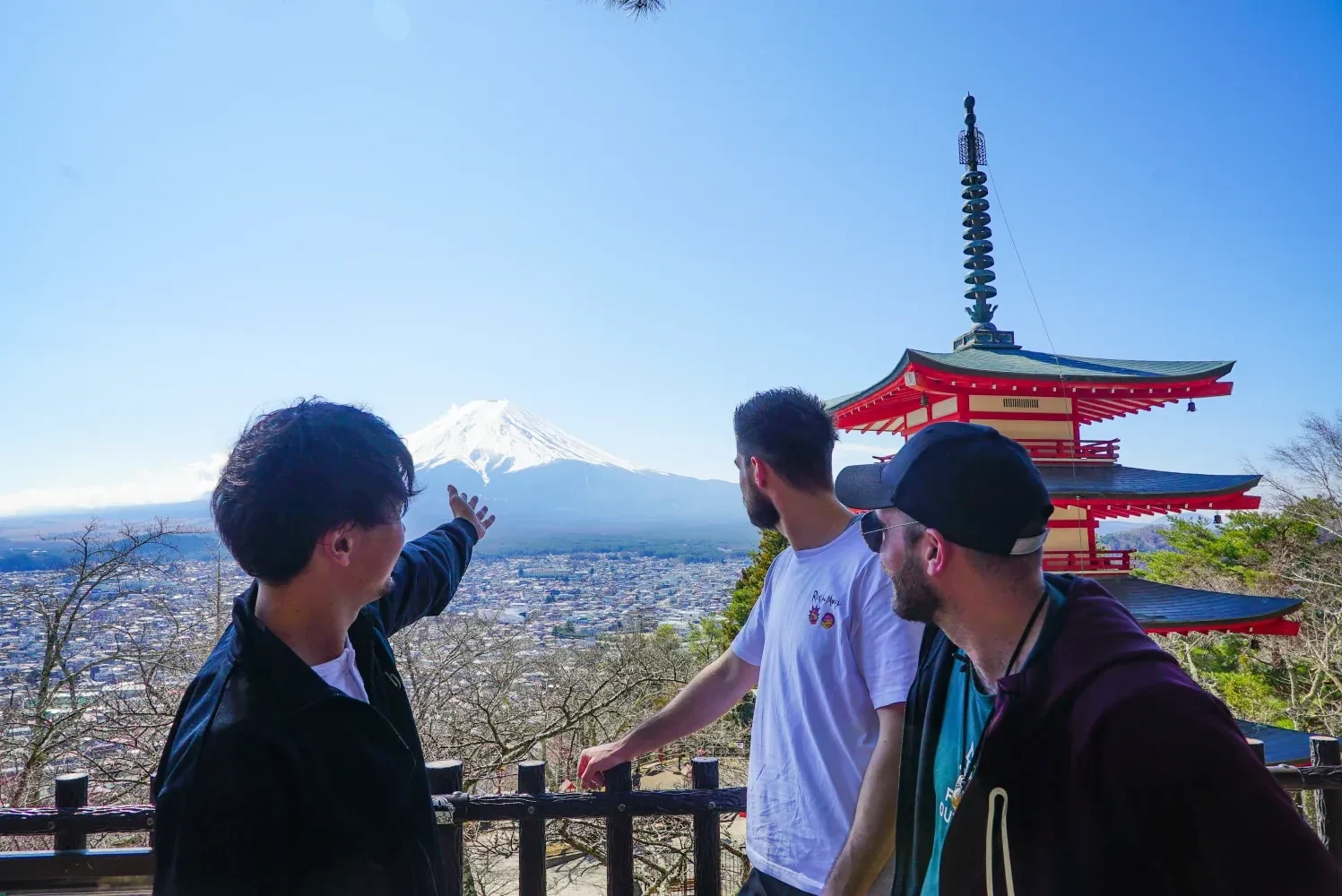
How to Enjoy Mt. Fuji 5th Station! 3 Things You Must Do Before Leaving
1. Hiking to the 6th Station
Source: Fujiyoshida Official
While Mt. Fuji 5th Station is enjoyable just for its magnificent views and unique local foods, if you've made it all the way to the 5th station, a short hike is highly recommended.
From Mt. Fuji 5th Station to the 6th station, you can enjoy approximately 50 minutes of hiking. While you can experience mountain climbing with beautiful views of Lake Yamanaka spreading below, the gentle slope makes it accessible even for beginners.
Along the way, you'll find alpine plants blooming with vibrant flowers such as wheel lilies and takanebara, so take your time to fully appreciate Mt. Fuji's natural beauty.
Recommended: Enjoy Mt. Fuji's Nature on the Sacred Trail "Ochudo"!
Source: Hoei Sansou
If you want to further immerse yourself in Mt. Fuji's nature near Mt. Fuji 5th Station, taking a walk on the Ochudo trail is recommended. Ochudo is a trail that circles around Mt. Fuji's 5th station area. During the peak of Mt. Fuji worship, it was considered a sacred path that could only be walked by those who had climbed Mt. Fuji three times. Currently, only a portion of the trail is accessible due to areas with falling rocks where climbing routes have been closed.
The course from Mt. Fuji 5th Station to Oniwa (taking about 70 minutes) is particularly accessible, with well-maintained walking paths on level ground. You can thoroughly enjoy Mt. Fuji's nature, including views of the summit from Oniwa (a natural garden) and alpine plants growing along the path.
2. Exploring Restaurants and Souvenir Shops
Source: Fujiyoshida Official
Mt. Fuji 5th Station has many restaurants and souvenir shops. You can enjoy just browsing through the unique Mt. Fuji-themed foods and souvenirs.
For example, you can taste Mt. Fuji 5th Station exclusive treats like the "Mt. Fuji melon bread" (melon-flavored cookie dough coating on Mt. Fuji-shaped bread) and "eruption curry" (curry sauce poured over rice molded in the shape of Mt. Fuji).
Additionally, be sure to check out the exclusive souvenirs that can only be found here, such as T-shirts and mugs featuring Mt. Fuji designs.
3. Visit the Fujiyama Komitake Shrine
Source: Home of Fujisan Yamanashi
Mt. Fuji Komitake Shrine was established in 937 at the summit of Komitake volcano. Mt. Fuji is said to have acquired its current form through repeated eruptions of two volcanoes - Komitake and the Older Fuji volcano.
For over 1,080 years, Mt. Fuji Komitake Shrine has been cherished by locals and climbers as a central place of worship, treating Mt. Fuji as a sacred site. Currently, the shrine is believed to offer blessings for safe climbing of Mt. Fuji, traffic safety, longevity, and successful relationships.
The shrine's exclusive souvenirs, such as the Goshuin stamp (a card received as proof of worship) featuring Mt. Fuji's design and various amulets make perfect mementos for visitors to Mt. Fuji.
Three Ways to Access Mt. Fuji 5th Station
More details About Access:
Mt. Fuji Access and Transportation Guide: How to Travel to Mt. Fuji from Tokyo
Using the Shuttle Bus to the 5th Station
Source: Official website
Mt. Fuji 5th Station is the terminal point of the toll road called the Fuji Subaru Line. While visitors can drive directly to Mt. Fuji 5th Station parking lot, during private car regulation periods, access via the Fuji Subaru Line is restricted.
In such cases, visitors must park at the "Mt. Fuji Parking" (Yamanashi Prefectural Fuji North Foot Parking Lot) at the mountain's base and take a paid shuttle bus to Mt. Fuji 5th Station.
The private car regulations are implemented primarily during the busy climbing season (July to September) to protect the environment and reduce congestion.
The journey from "Mt. Fuji Parking" to Mt. Fuji 5th Station takes approximately 45 minutes uphill and 35 minutes downhill. The shuttle bus operates from early morning until evening, allowing visitors to plan their trip according to their schedule.
Using Fuji Kyuko Mountain Climbing Buses
Source: Unjokaku
For those traveling by train to Mt. Fuji 5th Station area, the mountain climbing buses departing from Fujisan Station and Kawaguchiko Station on the Fujikyuko Line provide convenient access.
The Fuji Kyuko mountain climbing buses take approximately 1 hour from Fujisan Station and about 50 minutes from Kawaguchiko Station to reach Mt. Fuji 5th Station.
While bus schedules vary by season, during the climbing season from July to September, buses operate regularly from 6:00 AM to 7:00 PM, making it easy to coordinate with train arrival and departure times.
Using Taxis
Source: Fuji Kanko Travel
It's also possible to reach Mt. Fuji 5th Station by taxi from the "Mt. Fuji Parking Area" where shuttle buses arrive and depart, or from the nearest stations including Fujisan Station and Kawaguchiko Station.
Taxi service is the fastest way to reach Mt. Fuji 5th Station besides private vehicles. By taxi, you can reach Mt. Fuji 5th Station from the "Mt. Fuji Parking Area" in as little as 35 minutes. However, please note that taxi fares are considerably higher than bus fares.
Easy Mt. Fuji Area Sightseeing: Private Tours with Tokyo Pickup

The "Mt. Fuji Nature meets Culture Tour with a Private Hire Car" is a private tour that offers a complete experience of Mt. Fuji's attractions, including Japan's most famous Mt. Fuji viewing spot "Shin-Kuratama Asama Park" and "Oshino Hakkai," a famous spring water site where you can see the bottom of the water due to its crystal clarity.
In addition to the beautiful natural scenery, another attractive point is the opportunity to taste iconic Japanese dishes representing the Mt. Fuji area for lunch.
Mt. Fuji, Japan's highest peak, has not only been admired for its magnificent nature but has also been worshipped as a sacred mountain by Japanese people since ancient times. The area around Mt. Fuji is home to many cultural landmarks, including historic shrines.
By joining this tour, you can efficiently visit must-see spots around Mt. Fuji while gaining a deeper understanding of Mt. Fuji's history and culture through the guide's explanations.
The tour lunch can accommodate vegan and gluten-free requirements. However, please make sure to request these dietary requirements in advance.
- Meeting point: Tiffany Shinjuku Store (near Shinjuku-sanchome Station) or your hotel
- Tour area: Central Tokyo ~ Mt. Fuji area ~ Central Tokyo
- Start time: 8:00~


